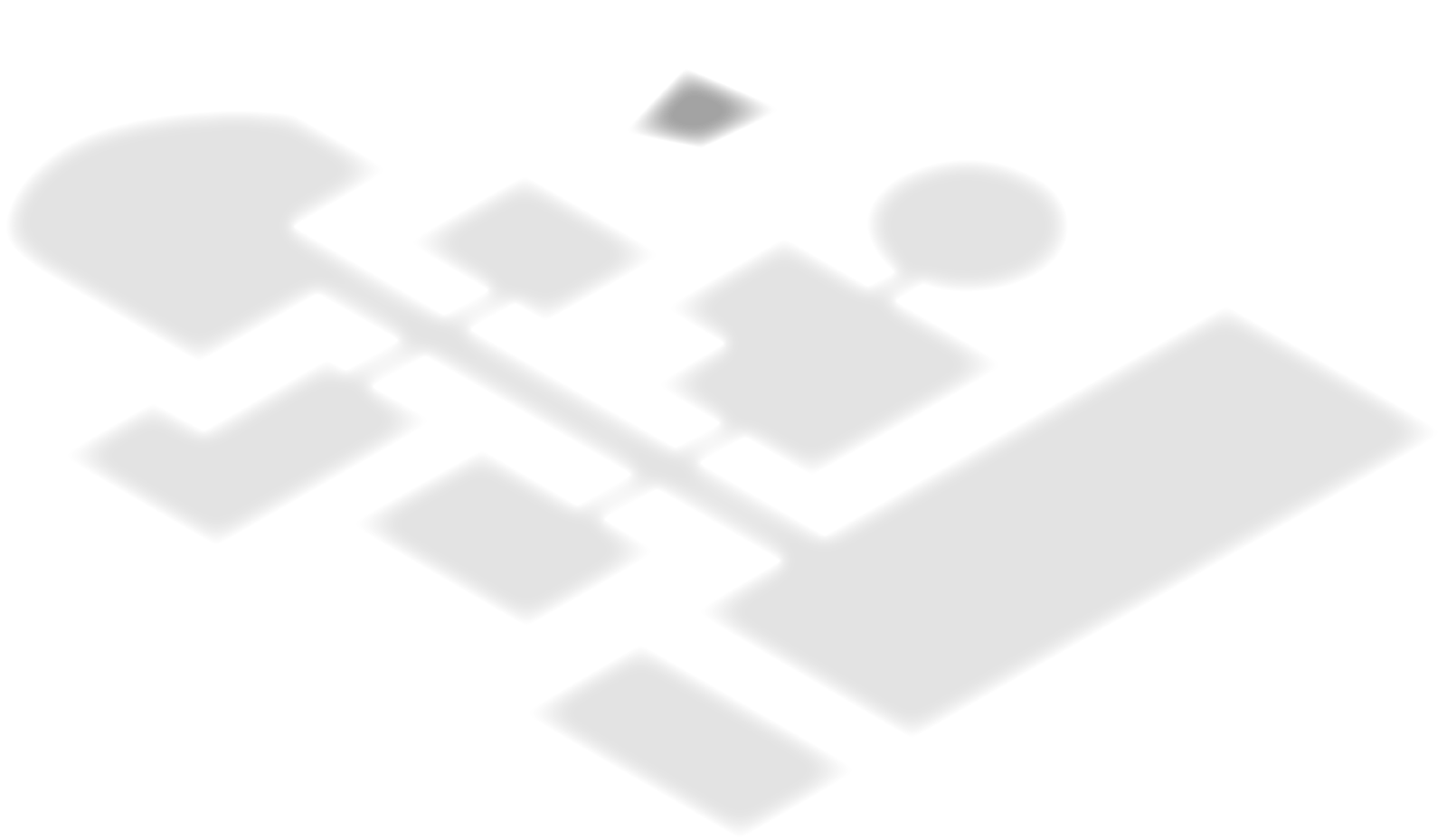Glare poses a risk to eyesight and reduces performance. For occupational health and safety experts, preventing glare is therefore a key concern – something reflected in regulations and standards. The Workplace Ordinance (ArbStättV) and ASR A3.4 set out specific requirements and measures. Some of the key points are briefly summarised below.
Glare is understood as disturbance caused by excessively high luminance or large luminance differences within the visual field. More details can be found under Lighting design.
Source: ASR A3.4, section 3.12
Two types of glare
A distinction is made between:
Direct glare
This arises from excessively high luminance differences caused, for example, by window areas or inadequately shielded lamps in the visual field.
Reflected glare
This occurs through reflections of light on shiny surfaces (e.g. screens, keyboards, worktops, walls).
For office layout, this means that particular attention must be paid to the arrangement of workstations and luminaires. In addition, glossy surfaces within the field of vision must be avoided.
The intensity of sunlight is often underestimated. Even a cloudy sky can cause glare if no suitable shading is in place and workstations are poorly positioned.
Glare may also result from incorrectly placed or unsuitable luminaires.
Measures to prevent glare
Here’s how you can respond to potential sources of glare:
DIRECT GLARE FROM NATURAL LIGHT
- Arrangement of workstations
Workstations should be positioned so that users’ line of sight runs parallel to the main window front (see Figures 1–3). - Use of adjustable shading devices
These are essential where large window or glass areas are present on several sides of a room.
If glare from daylight cannot be avoided by suitable placement of workstations, appropriate shading must be installed. Further details can be found in DGUV Information 215–444 Sonnenschutz im Büro [sun protection in the office].
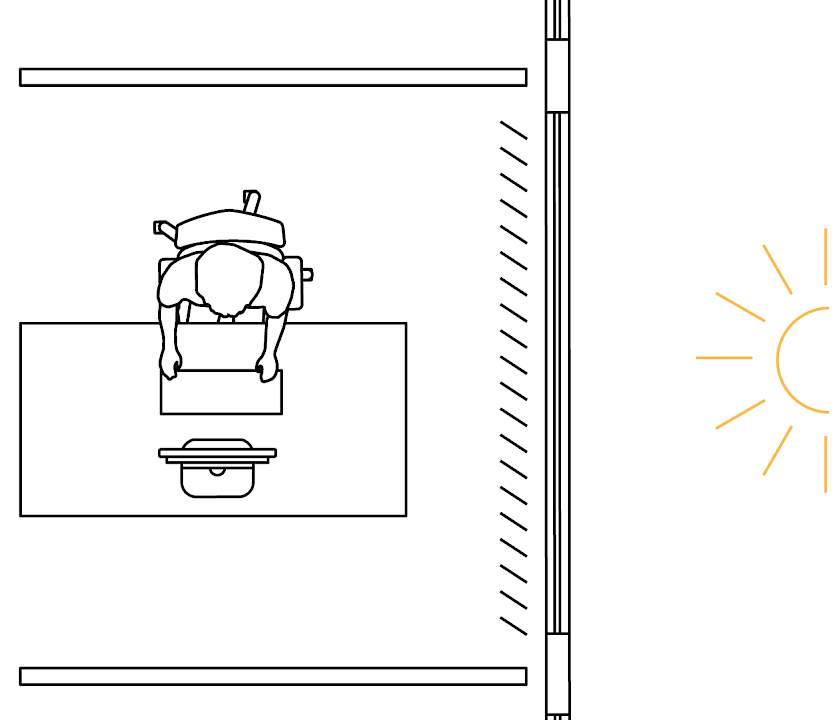
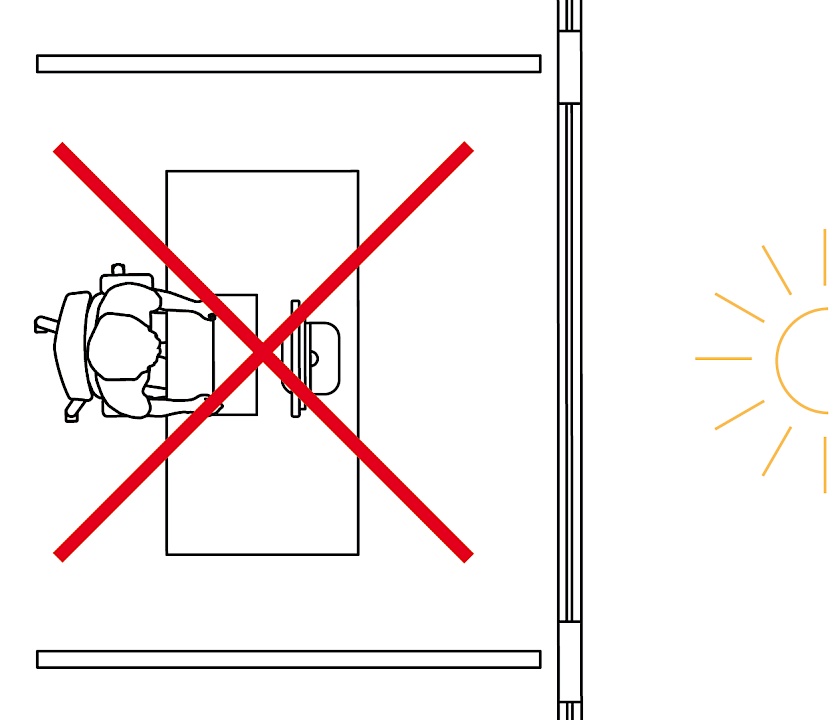
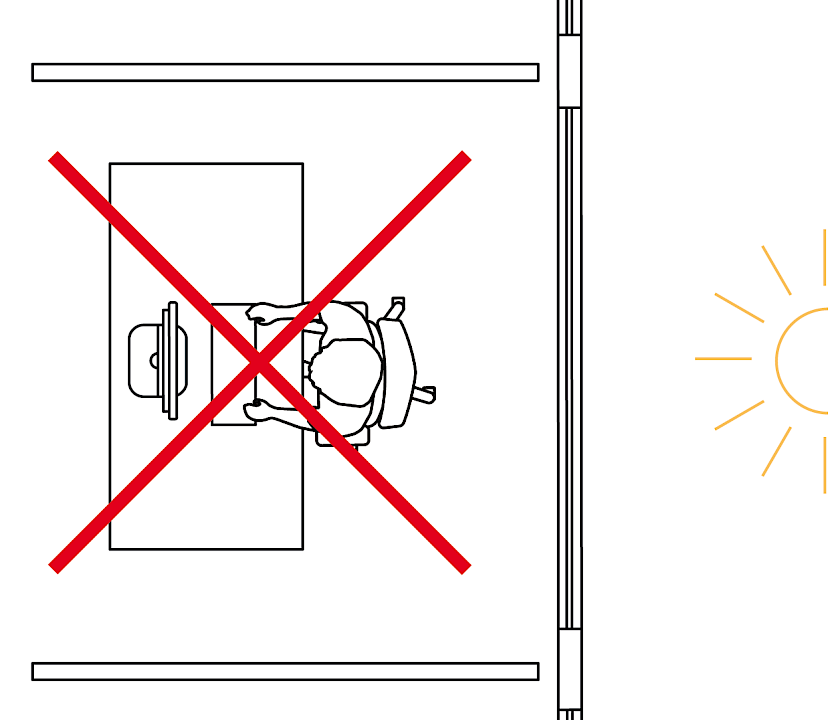
DIRECT GLARE FROM ARTIFICIAL LIGHT
- Arrange linear luminaires parallel to the windows
- Position luminaires to the side of workstations (see Figures 4 and 5)
- Use louvred luminaires
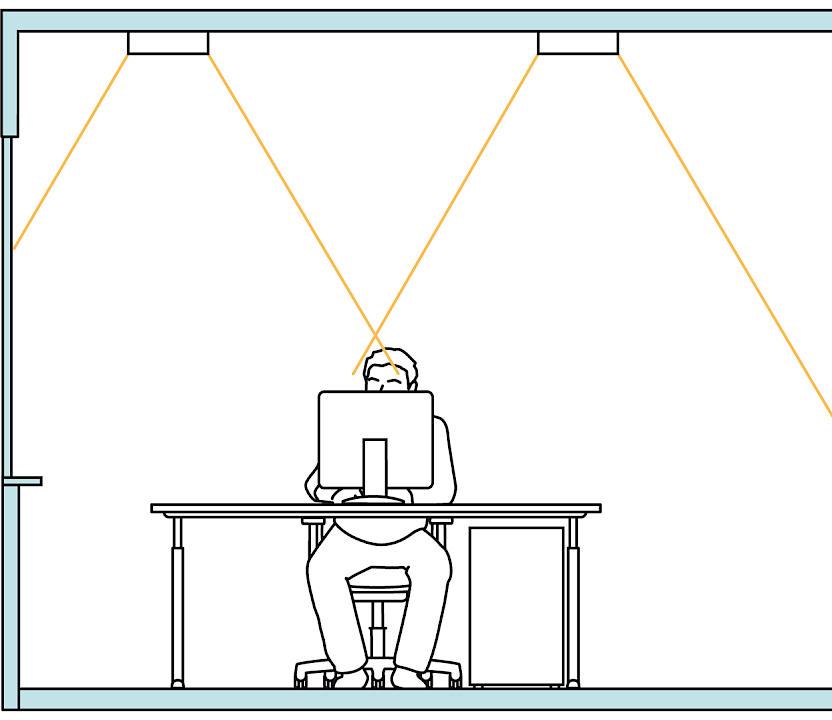
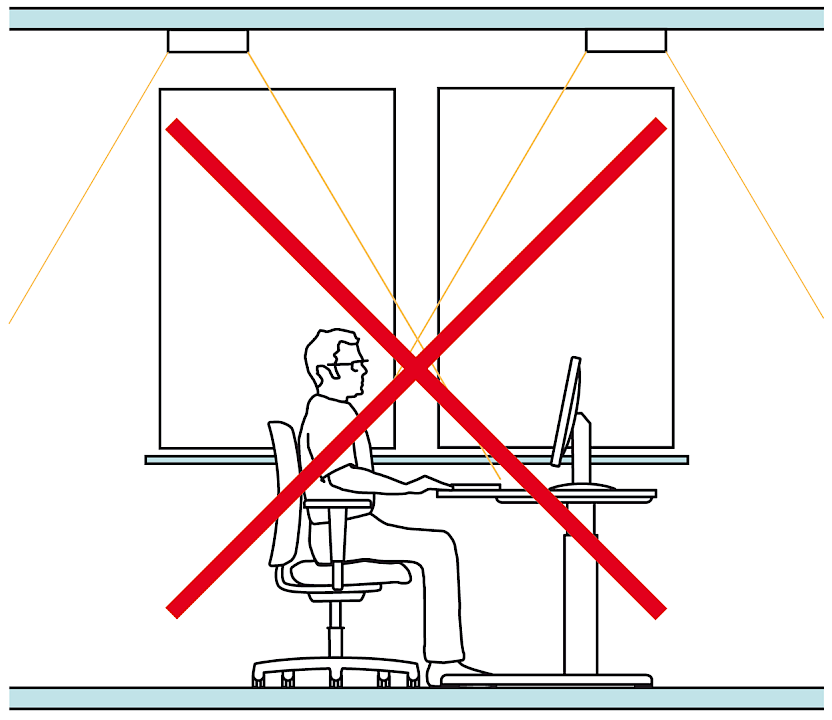

REFLECTED GLARE
- Comply with the recommended reflection values for work surfaces, furnishings and equipment.
ASR A3.4 generally recommends the use of matt surfaces. For furniture work surfaces, DGUV Guideline 315–410 specifies the relevant requirements for workplaces in Germany [available only in German].

